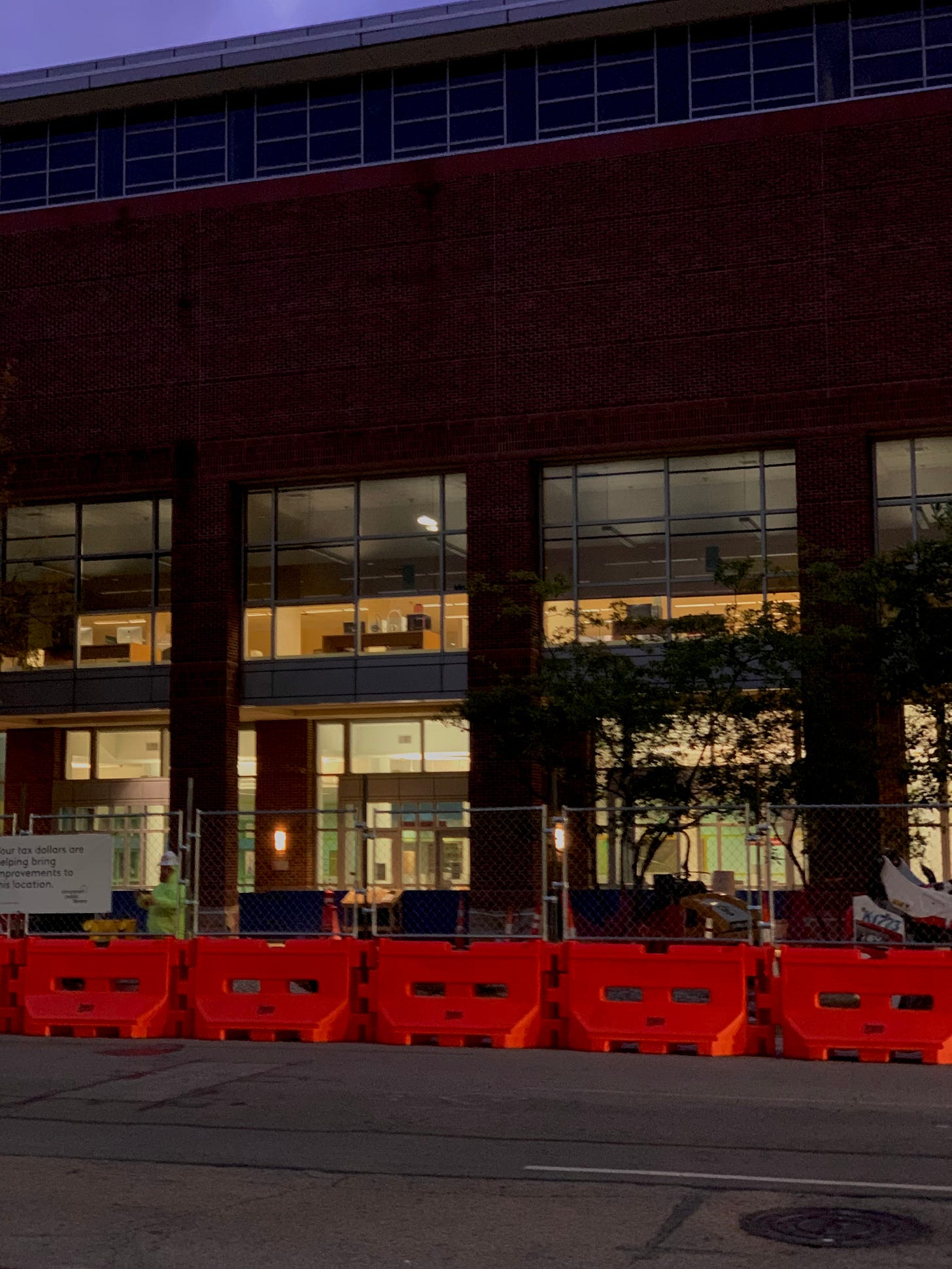City mornings downtown are quiet post-pandemic, the hush is rather deafening. Mother Nature, in very untypical motherly fashion, has refused to turn on the lights before 7 a.m. but there’s a distinct lack of headlights beaming at me as I walk. I am easily startled by a misstep, a shadow, or the presence of something new.
Or the case of this morning, along the Vine and Ninth St. location of the main Cincinnati & Hamilton County Public Library, something is newly absent.
Cincinnati once boasted of a treasured library where books were stacked to the ceiling and spiral staircases offered access to achieve literary heights. Photos of the former library are legendary to urbanists who cry out at the lack of preservation enthusiasm displayed by long ago and more recent officials. But our library moved on to place themselves at the forefront of genealogy research and gain awards for their service and circulation numbers. I’ve helped quite a bit in that last group.
In my younger days, I frequented the two-story 1906 sandstone building housing the library in Amherst, Ohio and shook at the foot of the grand steps leading to its front portico. Until realizing that one entered through a door in the side. It was accessible. More hobbit-sized for a kid. Every summer, I was encouraged by the librarian and my mother, who toted us there, to read and read and read. I would stumble up the short side stairway with books in arms and let them spill out on the return counter, then fill my bag for more. That love spread over the years and across the miles. My first order of business in a new place is to check out the library, whether in Boston, New York, or Tillamook, Oregon. In 1999, while living in Seattle for my husband’s medical care, I was desperate for inspiration and the library took my pain away.
The library is a safe space for people who don’t have access to computers, who need to step in from the rain, for those who could use a friendly face, a witty quip or engrossing read, and a little help. The library is like a warm hug from a favorite aunt. You will never grow cold in its embrace.
The saddest day of the pandemic came when the library shut down to figure out how they safely serve the community. Books were picked up via a window while I waited outside, mostly on foot. Others lined up by the carload. When we could enter inside again, I did. Despite the lack of warmth in the design or ingenuity in its 1960s architecture, within the building, I added my breath to the flow of life breathed into the books. A simple exchange for what I have received from its collection over the years. I imagine the library as its own sort of renewable energy.
In my circles, there’s controversy surrounding the NYT’s Bad Art Friend article. How great writers can be bad friends. How great writers don’t understand the value of being a good literary citizen. The library does.
The blackout curtain of night lifts as I as feel air and a certain weightlessness. There’s something wrong with my line of sight. Buildings are not aligned. I wipe dew and morning gunk from my eyes. When, what to my wondering eyes should appear is the north building of the Cincinnati and Hamilton County Public Library and the bright pastels of the toddler room where I once escorted my nieces for story time.
The brick wall separating the public from the public library is gone.
City walls were once constructed for protection from the enemy. We met the enemy and he was us. But now, though the building was temporarily fenced off for renovations, I could see through to my own imagination. Others could see through to their reflection. We had no more need of enemies.
I’m reminded of this quote from Ursula K. Le Guin, in The Dispossessed. “There was a wall. It did not look important. It was built of uncut rocks roughly mortared. An adult could look right over it, and even a child could climb it. Where it crossed the roadway, instead of having a gate it degenerated into mere geometry, a line, an idea of boundary. But the idea was real. It was important. For seven generations there had been nothing in the world more important than that wall. Like all walls it was ambiguous, two-faced. What was inside it and what was outside it depended upon which side of it you were on.”
The idea has been torn down.
*Learn more about the Cincinnati Public Library future building plans here.




